Esfahan, Isfahan or the ancient Espadana is the capital of the province with the same name. “Isfahan Nesf-e Jahan” is the most famous Persian description of the 16th century for this city, which means that Isfahan is half the world. This “Florence of Orient” was chosen and designed as the capital of the country under Shah Abbas I in 1598, and has been reconstructed with so many new mosques, beautiful palaces, bridges, masterpieces of world architecture, avenues and parks during Safavid dynasty.

“Florence of Orient ” and “Isfahan Nesf-e Jahan” (Isfahan; half the world) all are to describe the splendor of a city shining along its life-giving river at the heart of Iran.
In Isfahan You can hardly find a street without a wide central pedestrian reservation of trees, fountains and flowers. Behind every corner you stumble upon spectacular remainders of rich past. In its heyday under Safavid Empire when the city flourished and gave birth to its outstanding Islamic and Iranian architecture, Isfahan was a large city with many Persian Gardens, libraries, public baths, shops and mosques that amazed western visitors, who had not seen anything like that at home.
In 1598, Isfahan was chosen as the new capital of Iran following the order of Shah Abbas the Great. In order to centralize the capital, he moved the Safavid government to Isfahan as part of his larger plan to lift the country from the slump it had fallen into. One of the great works of Shah Abbas was “The Pattern of the world” or Naqsh-e Jahan Square (Now called Imam Square) which is a real jewel on Isfahan’s crown. This majestic collection of buildings fits economy, worship and aristocratic pleasures together in deliberate visual harmony.
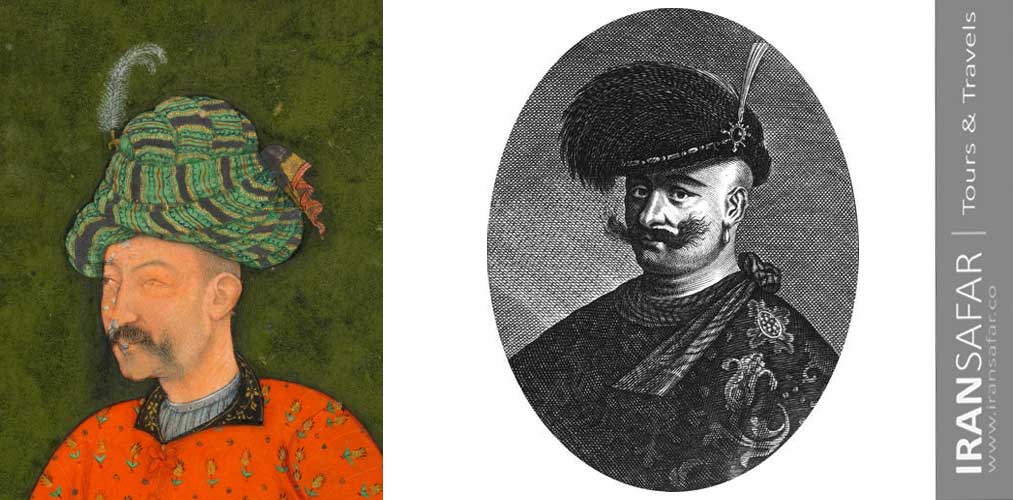 Shah Abbas the Great Safavid (r. 1588-1629)
Shah Abbas the Great Safavid (r. 1588-1629)
Somewhere in the west of Naqsh-e Jahan Square, a beautiful tree-lined boulevard, offers delightful hours of walk under its cool green shades. Chahar Bagh is the main street of Isfahan and traverses Zayandeh Rud river through Si-o-se Pol bridge. The river is crossed by some of the world’s most picturesque covered bridges.
Another sight worth spending hours of strolling is the city’s four-mile labyrinthine Grand bazaar of Isfahan, with its majestic Qeysarieh Portal in Imam square. As Iran’s most famous art and handicraft center, Grand Bazaar of Isfahan would be a charming adventure for shopaholics, particularly because of the world famous Persian carpets, and textile.
André Malraux, the famous French author and adventurer says: “Who can claim to have seen the most beautiful city of the world without having seen Isfahan?” therefore, do not hesitate to visit The Florence of Iran whose well-proportioned mosques whose turquoise blue dome and minarets rival the color of the sky.
Top places to see in Isfahan
There is an old Iranian saying that goes, “Isfahan Nesf-e Jahan”, which means that Isfahan is half the world. During your visit to this magnificent city in central Iran, try to slowly unravel its layers to better grasp this rhyming proverb. There are dozens of palaces, mosques, bridges and gardens in Isfahan. Here are some highlights:
1
Imam Square (Naghsh-e Jahan Square)
Naqsh-e Jahan Square, now called Meidan-e-Imam (Also known as the Royal Square or the Shah Square), was the symbolic center of the Safavid dynasty and the Persian Empire. This huge rectangular square measuring 160 x 512 m, is the second largest in the world. Framed by turquoise domed mosques, a palace perched on plane tree columns and a covered bazaar; it stands out as one of the most spectacular architectural complexes in Iran. In the background, the domes, minarets, the sensitive bustle of the bazaar whose mazes leave north of the square: everything contributes to evoke the most beautiful mirages of the East.
The great Safavid king, Abbas I who made Isfahan his capital in 1598, rebuilt a new city according to a simple and grand plan, with vast ordinances and large breakthroughs , a fine example of urban planning ahead of its time. The heart was the king Place (1611), a huge perimeter surrounded by long walls with double arches and whose dimensions were designed to accommodate a polo field.
The Afghan invasion of 1722 put an end to the magnificence of a city that will struggle for two centuries to regain its rank. However, the immense restoration work undertaken has restored its entire splendor to Isfahan, which is again one of the largest urban centers in Iran. With incomparable monuments like the Imam Mosque (formerly known as the Shah Grand Mosque), one of the most beautiful in the country, Isfahan could not remain in the shade.
Read More: Guide to Naqsh-e Jahan Square
Isfahan Imam mosque
The Shah Mosque, now called the Imam Mosque, is located at the southern end of the Imam square. The construction of this mosque, ordered by Abbas I, took place from 1612 to 1627. Unlike the Sheikh Lotfollah Mosque, the Shah Mosque is built on the Iranian plan with four Iwans surrounding a courtyard. The portal of the mosque is a Pishtak, that is to say a large rectangle of masonry surrounding a shallow niche dominated by a Persian arch. It is flanked by two towers in the form of minarets. Two towers similar to the previous ones surround the main courtyard Iwan which leads to the prayer hall surmounted by a large dome. From the courtyard, you can also access each of the two madrasas located on either side of the central courtyard. The entrance portal is aligned in the axis of the square but the orientation of the prayer hall towards Mecca induces a non-alignment of the perspective between the entrance portal, on the one hand, and, on the other hand, the prayer hall building and the rest of the building.
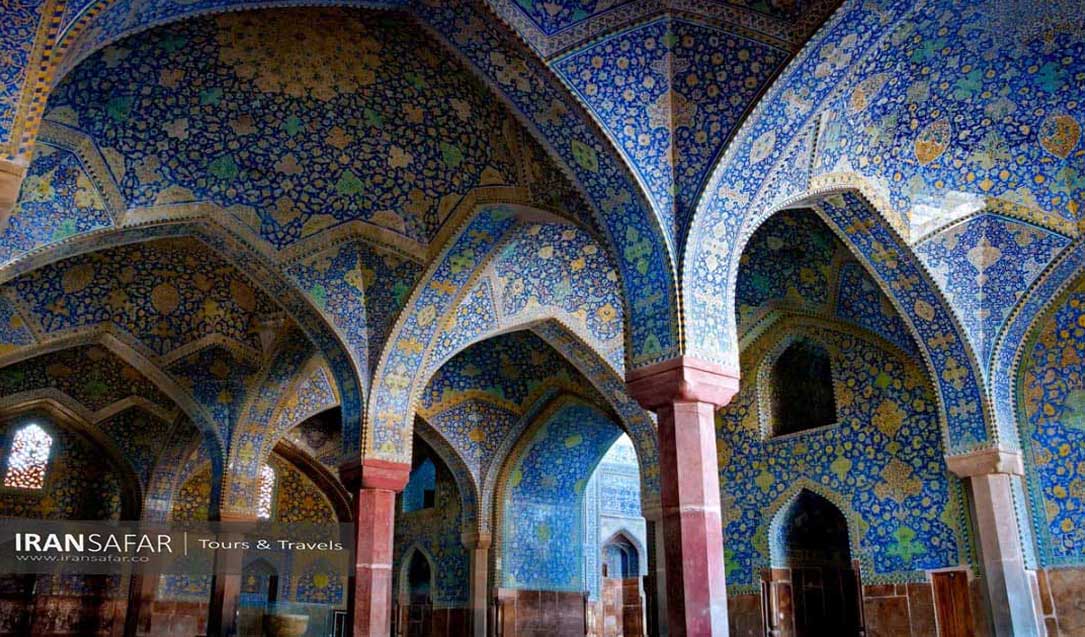 Imam mosque, Isfahan, Iran
Imam mosque, Isfahan, Iran
The main entrance of this mosque is located on the south side of the square. There are other entrances in the neighborhoods around the building (for faster and easier access to the people of the neighborhood). Behind the entrance starts a corridor that leads visitors to the inner courtyard. It makes an angle of 45 degrees, aimed at aligning the mosque with Mecca while maintaining the integrity of the square.
The height of the huge dome of Imam Mosque is 52 meters, the height of the southern Iwan minarets is 48 meters and the height of the minarets at its entrance in Naghsh-e Jahan Square is 42 meters.
Plan of Isfahan Imam Mosque
Here is the full plan of Imam mosque:
3
Sheikh Lotfollah mosque
This small mosque located on Southeast of the square, opposite the Ali Qâpu palace, was completed in 1619 by Mohammad Reza Isfahani (son of the architect of the Thirty-Three Arches Bridge), and owes its name to a prestigious theologian. Of more modest proportions than the great mosque, it is covered, outside as well as inside, with ceramics in rare tones. The glazed earthenware dome is decorated with blue flowers and white arabesques that stand out against a cream or pink background depending on the time of day.
Do not hesitate to give yourself some time for contemplation and to come back at different times of the day because of the whole changes radically according to the angle of the sun.
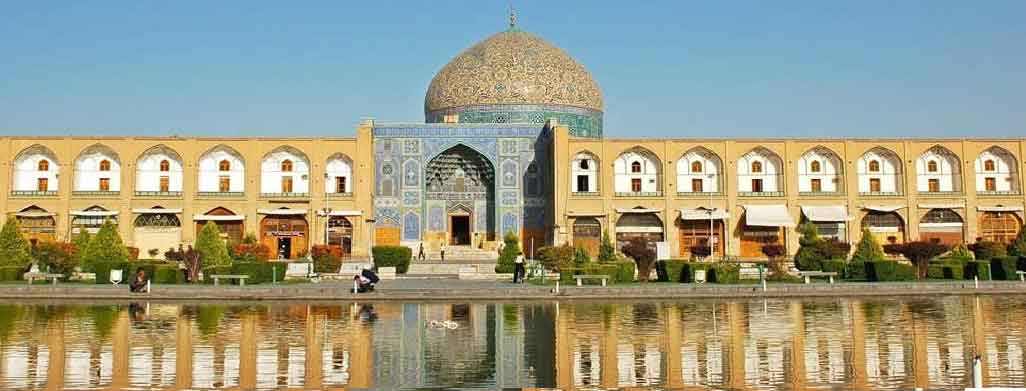 Sheikh Lotfollah mosque, Isfahan, Iran
Sheikh Lotfollah mosque, Isfahan, Iran
the highlight of the show is the ray of light filtered by high Moucharabies placed in the dome supporting the dome and letting the “peacock tail” appear on the walls. Take the time to wander in this square room, 19 m wide, to vary the shades, colors and shadows on the decorations depending on the angle of entry of the sun’s rays through the windows.
The mosque, once completed, was reserved for the private use of the Sheikh and his relatives, hence its nickname of the king’s oratory. You will also notice the total absence of a minaret, a strange fact for a mosque, but the call of the muezzin was useless since only the Sheikh came to pray under the dome.
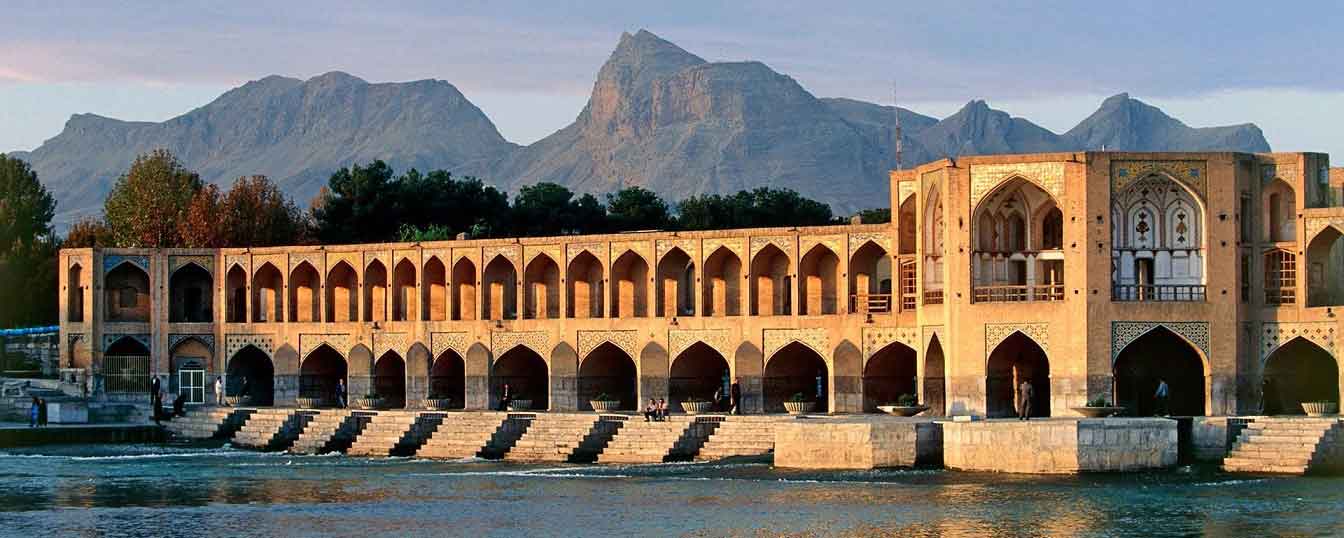 Khaju Bridge, Isfahan, Iran
Khaju Bridge, Isfahan, Iran
Khaju bridge
Khaju Bridge, built in 1650 and restored in 1873, is one of the historical bridges on the Zayandeh Rud in Isfahan. linking the Khaju quarter on the north bank to the Zoroastrian quarter across the Zayanderud. The bridge was used a place for public meetings as well. There is a pavilion located in the center of the structure, inside which Abbas II would have once sat, admiring the view.
The mausoleum of Arthur Pope and his wife Phyllis Ackerman is situated nearby.
Si-o-Se Pol (Thirty three arched bridge)
Also called Allah Verdi Khan Bridge, Si-o-Se pol connects the north of Chahâr Bâgh Avenue to the south, the main artery of Isfahan and then to the district of Julfa. Si-o se pol dates back to the beginning of the 17th century (1603), when the district had just been taken over by the Armenians, it owes its name to a general of King Shah Abbas, the famous war chief in charge of the works. The latter had imagined the bridge as a point of exchange between the two communities, and imposed that travelers can spend the night there. The exchanges could be commercial, with the holding of a bazaar, but also cultural, with rooms planned for shows, storytellers, jugglers … So that the bridge quickly became one of the liveliest places in Isfahan after its construction. With its thirty-three arcades on two levels, this magnificent structure is still the largest bridge in Isfahan today (298 m long and 14 m wide).
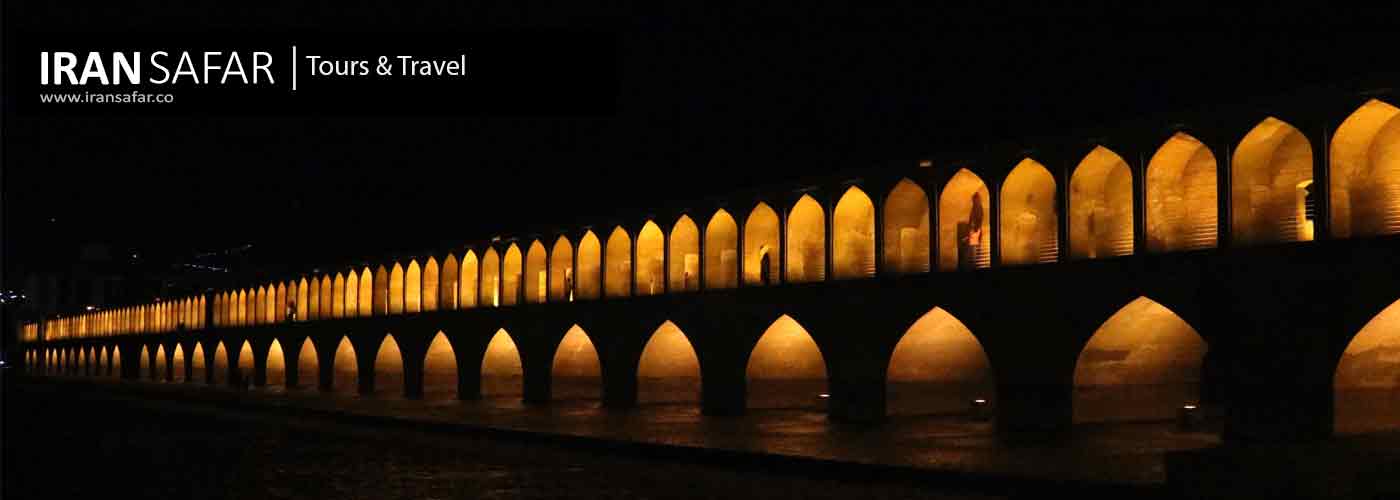
Si-o-Se pol bridge, Isfahan, Iran
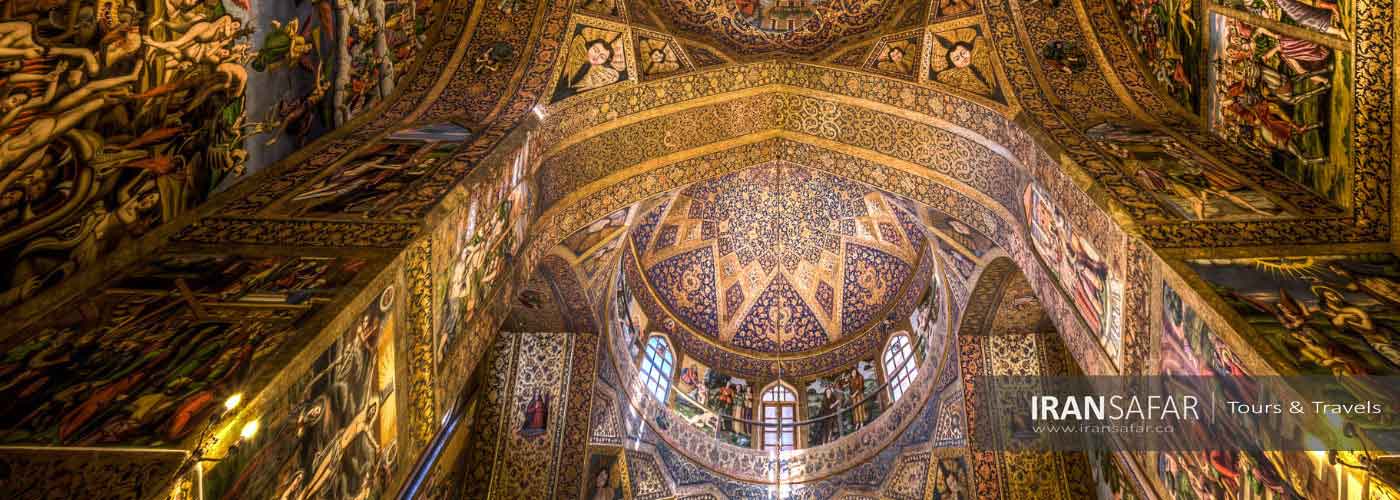 Vank, Armenian Church, Isfahan, Iran
Vank, Armenian Church, Isfahan, Iran
6
Vank Cathedral of Isfahan
Abbas the Great invited the Armenians to his new capital Isfahan. Armenians were facing troubles due to the Ottoman-Safavid War (1603-1618), so they accepted the king’s invitation and settled in New Julfa neighborhood of Isfahan. Armenians controlled much of the Persian international silk trade, so the king gave them the monopoly on silk exports. Abbas also created a new standing army to guard the borders and the caravan roads and re-stabilized the country’s territories which helped the traders to feel safe investing in the country.
Located in Jolfa Armenian district of Isfahan, Vank Cathedral, built first in 1606, is among the most famous churches in Iran. The building, protected in an inner courtyard, is flanked by a campanile (1700) and topped with an Islamic dome. There are Beautiful interiors with murals and evangelical fresco paintings in particular; such as the scenes of resurrection, the Last Judgement and the scenes of Gregory the Illuminator‘s life. there is a beautiful adjoining museum inside the courtyard which is open at the same time as the cathedral. The ground floor of this museum is partly devoted to the genocide committed by the Turkish authorities in 1915 (claimed by Armenians) , led to the death of 1.5 million Armenians. There are also lots of interesting objects mostly related to Christianity and Armenians in this small museum.
 Friday mosque (Jame Mosque), Isfahan, Iran
Friday mosque (Jame Mosque), Isfahan, Iran
Jame mosque of Isfahan
Isfahan Friday Mosque (Congregational Mosque) preserves evidence of a very long and very rich architectural history. This mosque was built in a Four-Iwan architectural style and each Iwan is decorated with breathtaking turquoise ceramics in shape of Muqarnas (niche-like cells).
Since it combines artistic and architectural innovations of 15 centuries of the Islamic era, it is considered one of the best Islamic works that is famous in the world today. According to various sources, it is clear that Isfahan Friday Mosque had been severely damaged and rebuilt over time due to fires and numerous wars and riots of different periods.
The famous Uljayto Mehrab and the great domes (Nezam-al-Mulk and Jaj-al-Mulk domes) of the mosque are the masterpieces of art. If you stand right beneath one of the mosque domes, you will notice that the ceiling is closer than its loon from the outside. That is because these are no ordinary domes; They are actually double shelled domes, one shell inside the greater one.
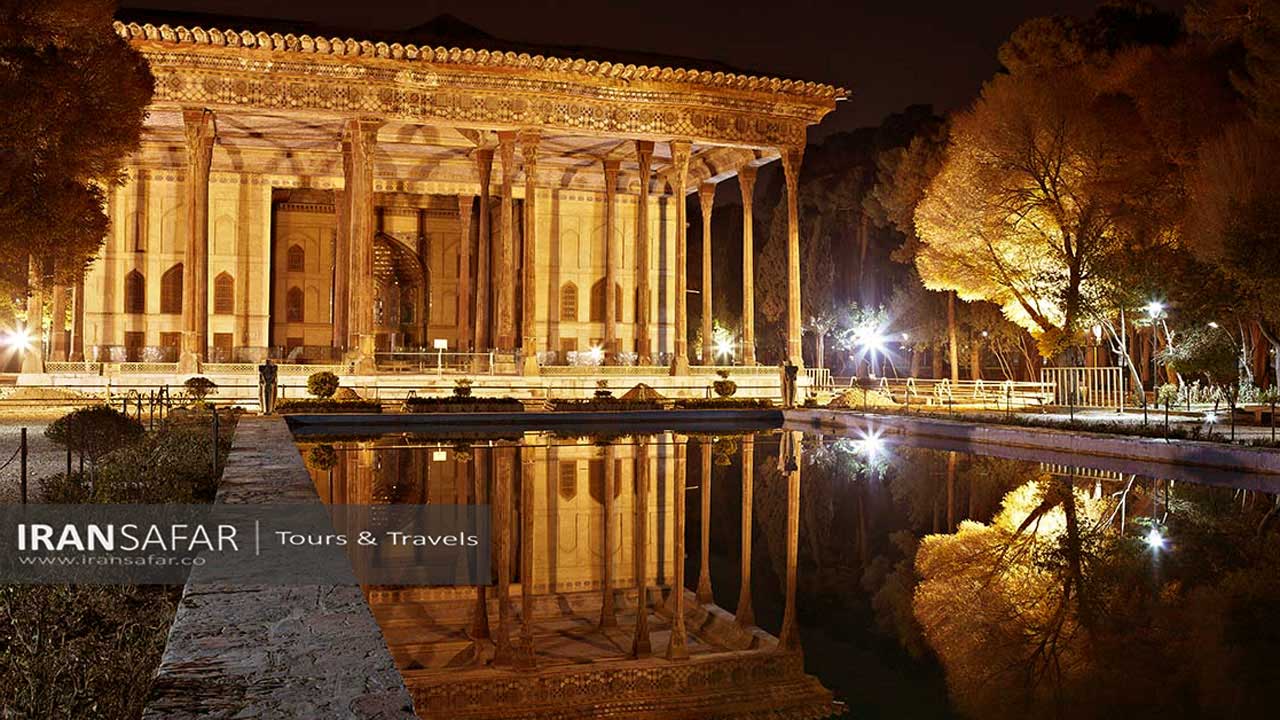
Chehel Sotoon Palace
Chehel Sotoon (or Sotoun, also Sotun) palace of Isfahan is one of the most famous and beautiful historical places of Isfahan, which fascinates visitors with its impressive architecture and design. The function of Chehel Sotoon Palace was a meeting place or reception hall for foreign delegations and ambassadors. The paintings and decorations of the various halls of the palace show the peak of Safavid art that impressed foreigners who visited the place. Chehel Sotoon Palace of Isfahan was founded during the reign of Shah Abbas I and was completed and developed during the reign of the next Safavid rulers such as Shah Abbas II. Learn more >>
Hasht Behesht Edifice
Hasht Behesht edifice of Isfahan is one of the most spectacular historical places in the city that makes everyone admire it from the very first moment. This is another work of the Safavid era (1660s) that is located in the middle of a public park in the urban context of Isfahan – on the west side of Chaharbagh Street.
The architecture of this two storied edifice is interesting and is octagonal in shape. On the grand floor, there are beautiful plaster carvings and unique mirror work. Each floor has several rooms and corridors that enjoy different types of decoration; for example, in one of them, there is a water basin used in summers and the other room had fire place.
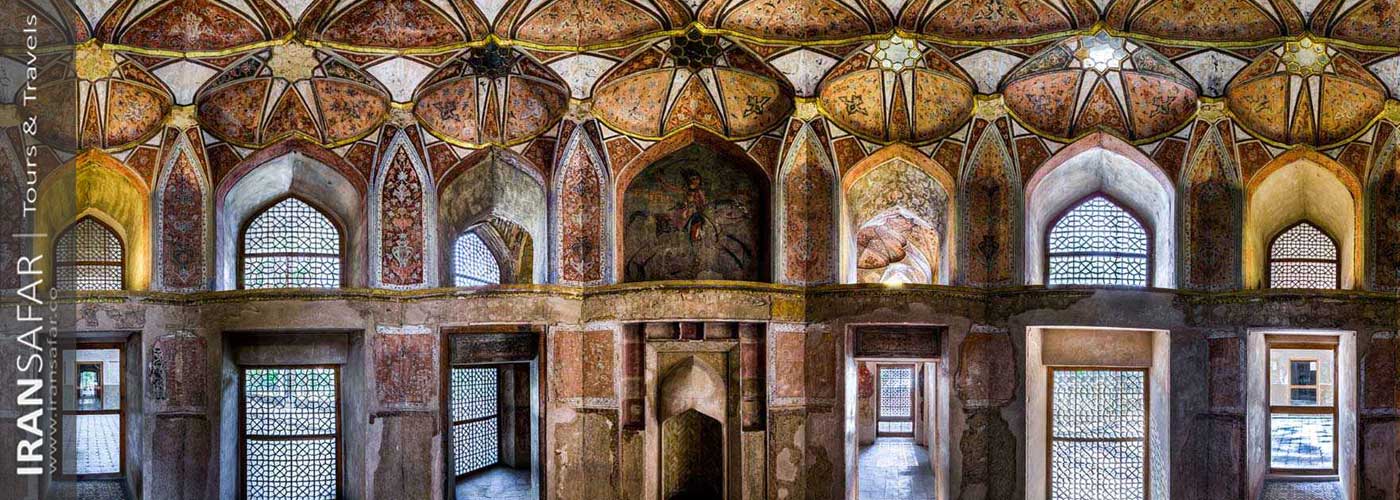
This beautiful mansion was constructed during the reign of Shah Soleiman as a Harem and was used during the reign of his successors, including Shah Safi and Shah Abbas II. The construction of Hasht Behesht Palace was completed in 1669, the third year of the reign of Shah Suleiman Safavid.
During the Qajar period, this garden was given to a first lady named Eftikhar al-Dawla on the condition that there be no change in the architecture of the mansion, but later, after her death, this garden was inherited and underwent many changes. Eventually, in 1964, the garden came under the supervision of the Ministry of Culture and turned into a park.
Since the name of this building is Hasht Behesht (meaning eight paradises), there has been an attempt to use number eight in the architecture of this building. Therefore, almost everything is octagonal in shape or eight in number.
Where to stay in Isfahan?
Due to the touristic nature of Isfahan, there are many hotels operating in this city, which include a wide range of budget guesthouses to mid-range hotels and luxury hotels. The flagship of Isfahan hotels can be considered the five-star Abbasi Hotel, which is a remnant of the Safavid era.

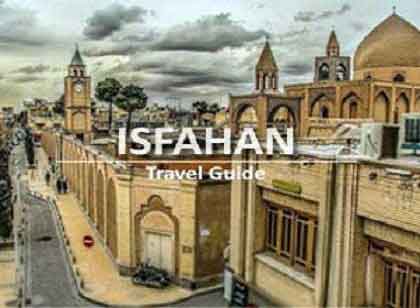
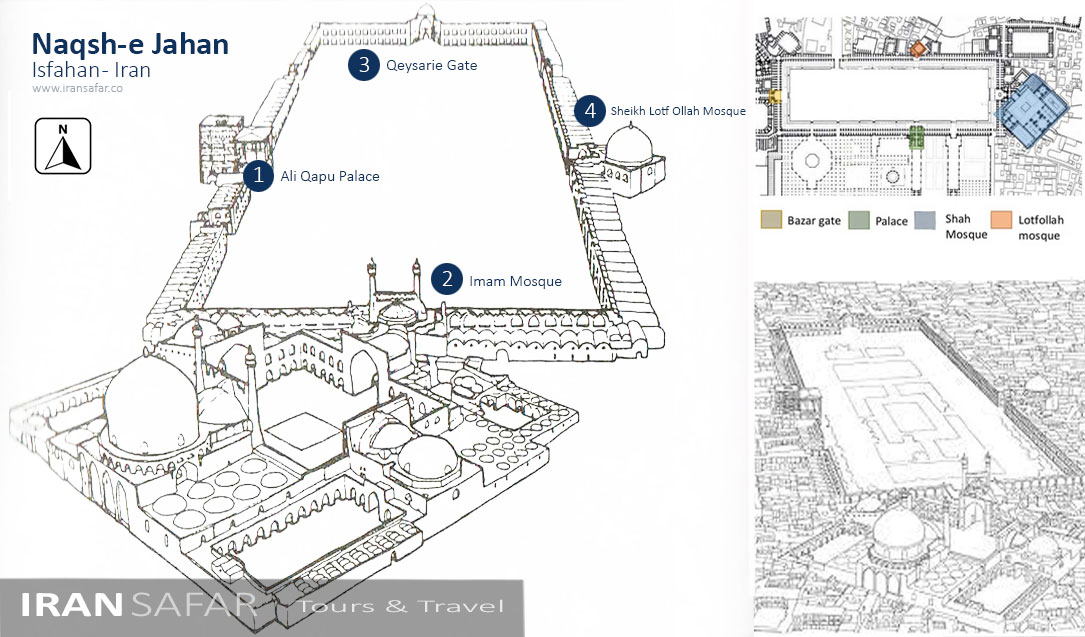
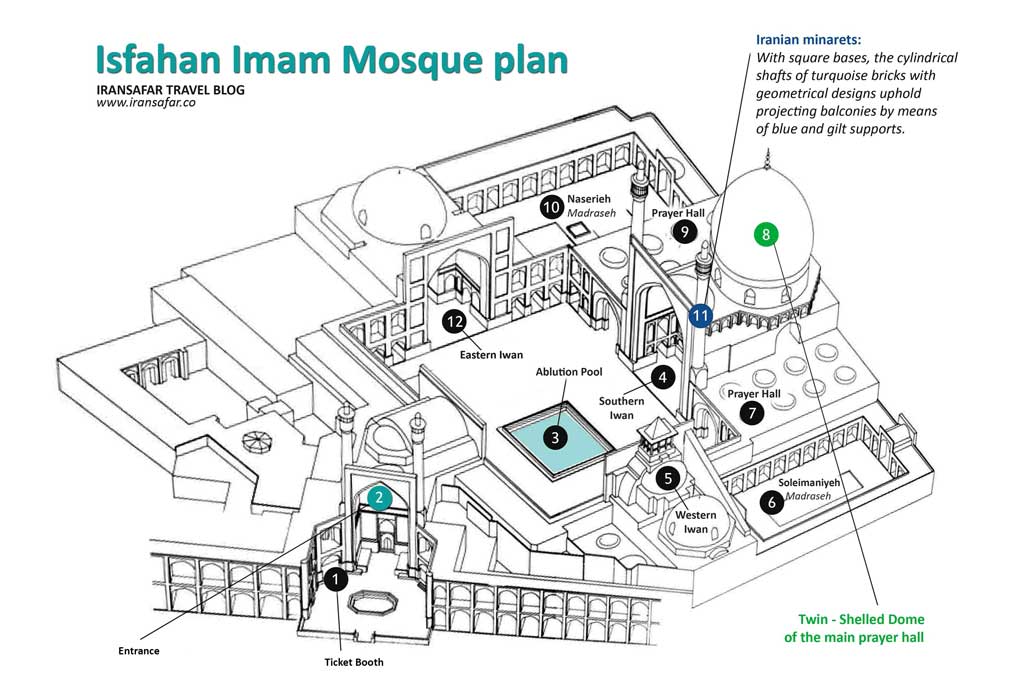
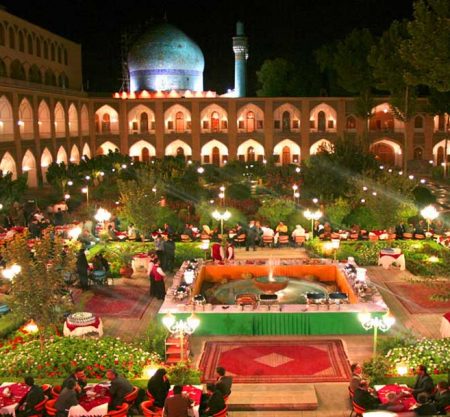
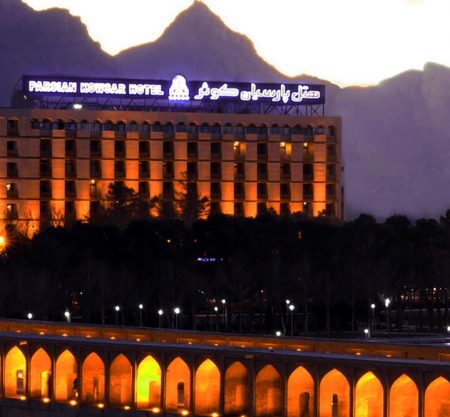
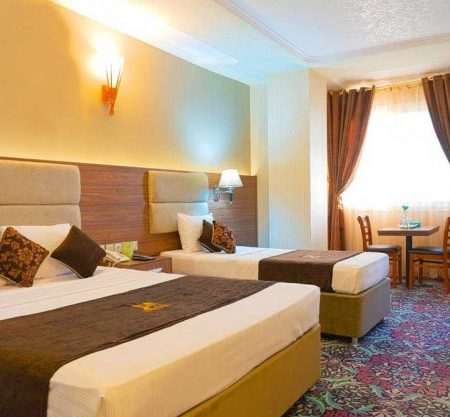
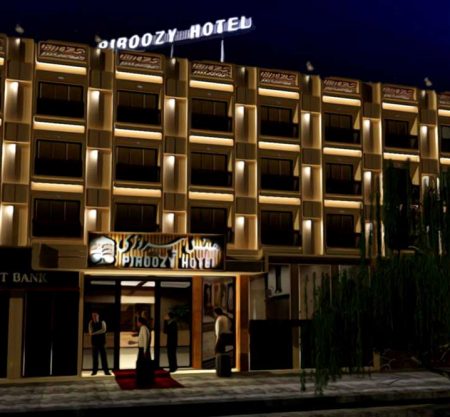

You should stay at theAseman Hotel!